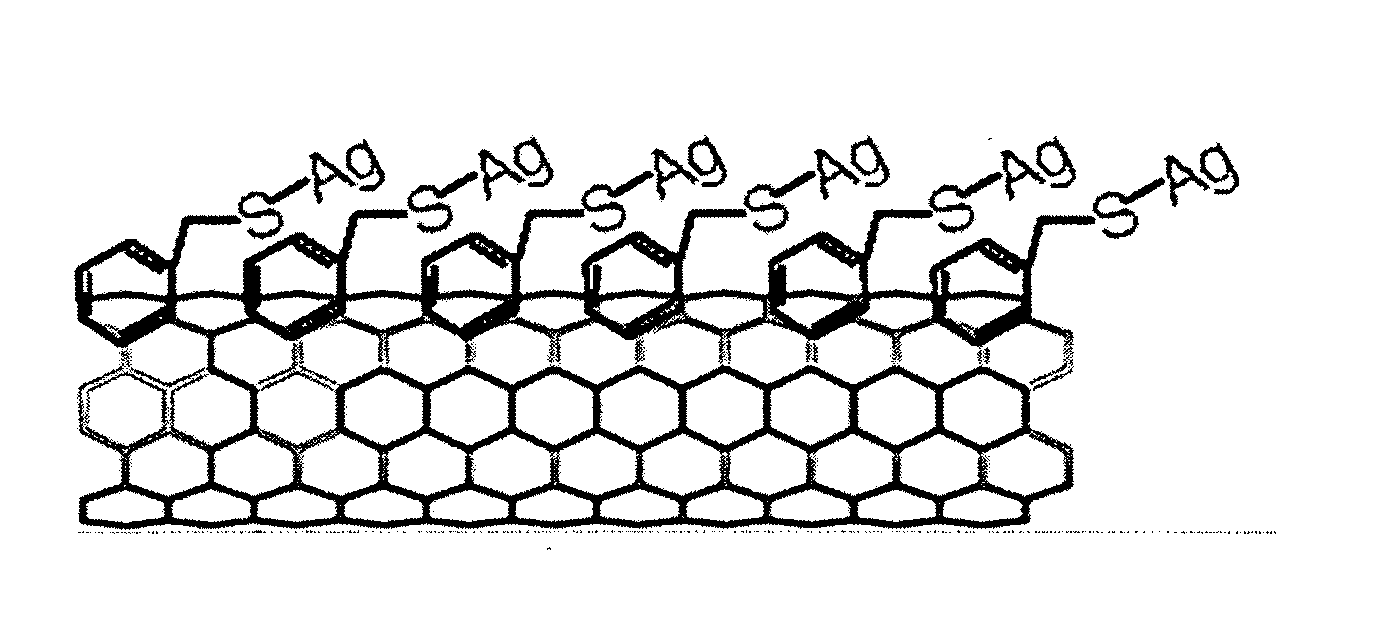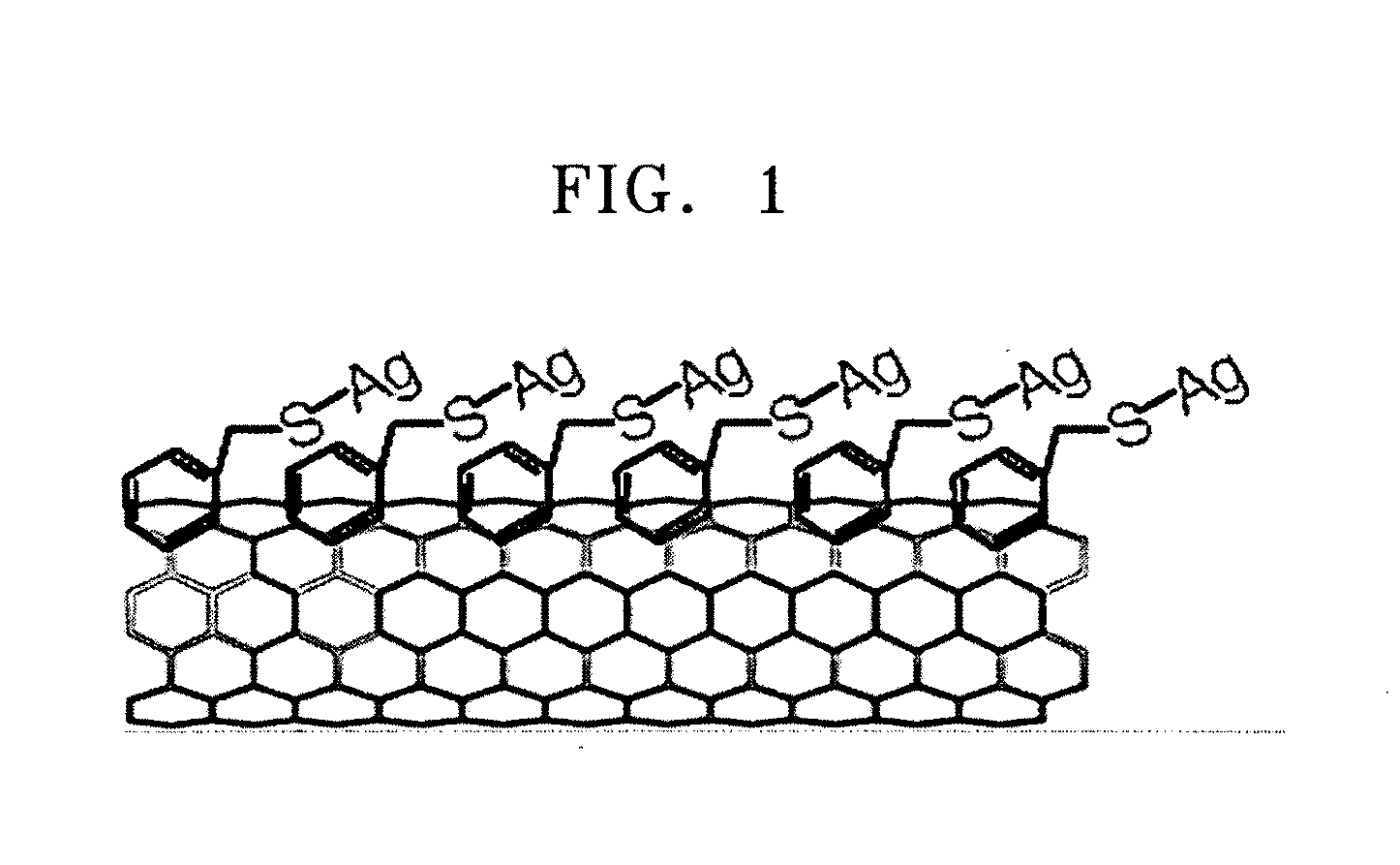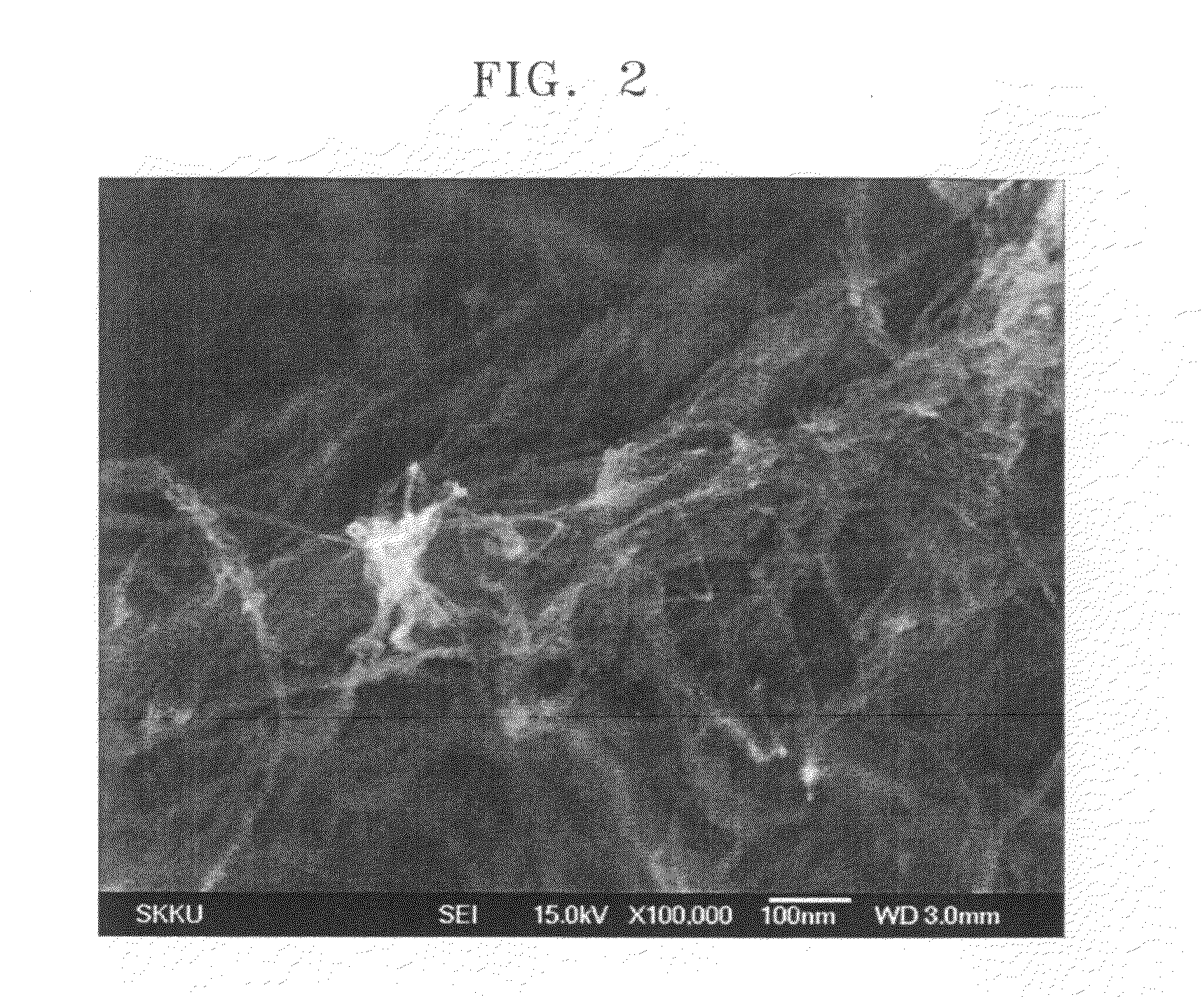Conductive carbon nanotube-metal composite ink
a carbon nanotube and composite ink technology, applied in the direction of non-metal conductors, applications, conductors, etc., can solve the problems of high cost of precious metals, e, gold and/or silver, and the inability to use precious metals in the electronic industry
- Summary
- Abstract
- Description
- Claims
- Application Information
AI Technical Summary
Problems solved by technology
Method used
Image
Examples
preparation example
Preparation of Carbon Nanotube-Metal Composite
[0039]First, 100 ml of ethanol and 1.18 ml of benzyl mercaptan was mixed, and 0.8 ml of the resultant solution and 100 ml of ethanol in which 0.34 g of AgNO3 was dissolved were mixed at a molar ratio of benzyl mercaptan to Ag of 1:25 to prepare white Ag colloid. Subsequently, the mixture was strongly stirred for about 48 hours, and the resultant solution turned dark brown, accordingly. As a result, Ag nanoparticles functionalized with benzyl mercaptan were synthesized.
[0040]50 mg of a thin single-walled carbon nanotube was mixed with 400 ml of ethanol, and ultrasonic waves (42 kHz, 560 W) were applied to the mixture for 20 minutes. Thereafter, 150 ml of the Ag nanoparticle solution was added to the resultant mixture, and ultrasonic waves (42 kHz, 560 W) were applied thereto for 10 minutes. Ultrasonic waves were applied to the resultant solution by using a bath type sonicator (42 kHz, 135 W) for about 8 hours. The resultant solution was w...
example 1
[0042]0.1 g of the carbon nanotube-metal composite of Preparation Example was mixed with a mixed solution of 82.03 g of α-terpineol and 10.87 g of ethylene glycol, and the resultant solution was stirred while ultrasonic waves (42 kHz, 560 W) were applied thereto for 20 minutes. Subsequently, 7 g of Ag nanoparticles each having a diameter in the range of about 1 to about 50 nm were added to the resultant solution, and the resultant product was ultrasonically fragmented at 540 Watts for 20 minutes to prepare a conductive carbon nanotube-metal composite ink.
example 2
[0043]A conductive carbon nanotube-metal composite ink was prepared in the same manner as in Example 1, except that 0.03 g of the carbon nanotube-metal composite and 3.5 g of the Ag nanoparticles were used.
PUM
 Login to View More
Login to View More Abstract
Description
Claims
Application Information
 Login to View More
Login to View More - R&D
- Intellectual Property
- Life Sciences
- Materials
- Tech Scout
- Unparalleled Data Quality
- Higher Quality Content
- 60% Fewer Hallucinations
Browse by: Latest US Patents, China's latest patents, Technical Efficacy Thesaurus, Application Domain, Technology Topic, Popular Technical Reports.
© 2025 PatSnap. All rights reserved.Legal|Privacy policy|Modern Slavery Act Transparency Statement|Sitemap|About US| Contact US: help@patsnap.com



